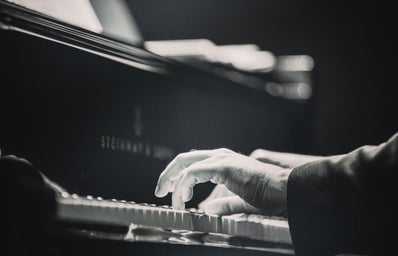Her Campus at uOttawa is releasing a series of articles about different fashion trends and styles throughout the decades. In this installment, we’re looking at the 1920’s! This decade, coined the “Roaring Twenties” marks a vibrant time of social and cultural shifts. As with all other moments in history, the social atmosphere of the 1920s was reflected heavily in fashion at the time, with a significant transformation from the conservative styles of decades prior.
Social Influences
Women’s Liberation
To understand the fashion of this decade, it is important to consider the social influence of the time. Women’s liberation and the fight for women’s suffrage was a significant factor that affected the fashion at the time. With women gaining the right to vote in Canada and the United States, and the rise of first-wave feminism, women began to gain more independence and social capital in society—these sentiments were manifested in the flapper dress.
Prohibition
The prohibition era led to the rise of speakeasies and underground parties due to the banning of the production and sale of alcohol in the United States. These secret social gatherings had people dressing in more daring and glamorous styles.
Cultural Shifts
The Roaring Twenties was a time of significant cultural shifts, such as the rise of consumer culture leading to people becoming more interested in keeping up with the latest trends and fashion styles. A significant cultural marker of the time was the Harlem Renaissance, a celebration of African-American culture and art. This movement brought the rise of jazz, which heavily inspired clothing and accessories of the time.
The Impact Of World War One
The efforts of the first World War had led to fabric rationing, and prior to the post-war twenties period, people were not financially well off. After the war, Canada and the United States experienced an economic boom, and with their newfound affluence, people used fashion as a way to move forward from the sombre styles of wartime.
Art and Design Movements
Finally, art movements—the most Famous being Art Deco—influenced fashion with bold colours, geometric patterns, and luxurious materials. This influence was best seen in the jewelry at the time.
The Fashion
The overarching theme of 1920s fashion is a departure from the Victorian and Edwardian styles of the past to bring about a more modern look. Two of the major fashion hallmarks of this decade are the flapper dress and menswear—inspired styles.
Flapper Dresses
Flapper dresses were typically short and loose fitting, with dropped waists and straight, elongated silhouettes. These dresses often featured fringe, heavy beading, and lots of sequins. Flapper dresses were much less restrictive than the styles of decades prior and allowed for much more freedom of movement. The dress symbolized the rejection of traditional modesty ideals and the desire to be comfortable in one’s clothing.
The 1920s flapper was typically seen in her iconic namesake dress, accessorized with a cloche hat—these were bell-shaped headgear that fit quite closely to the head, which complemented the short hairstyles that were in vogue at the time, such as the bob. The bob and other short hairstyles on women signified liberation from traditional gender roles, which pairs quite well with the flapper dress.
Menswear Inspirations
Continuing the theme of radical change, women began to adopt elements of men’s fashion—unheard of at the time—to once again display a departure from the styles of the past. Women began to wear pants more often and designers began to put feminine twists on traditionally masculine garments. Tailored suits and shirts became all the rage for women. High-waisted trousers—which we still see today—became a style symbol. The effects of this are still seen today with menswear-inspired looks on today’s runways. The androgynous look first popularized in the 1920s continues to have a hold and influence on modern’s women fashion.
Conclusion
Exploring the fashion trends of the 1920s reveals a dynamic era marked by profound social, cultural, and economic shifts. The “Roaring Twenties” was more than just a decade of style evolution; it was an embodiment of societal transformation. Women’s newfound independence and the rise of first-wave feminism found expression in the liberating flapper dress and the audacious adoption of men’s fashion elements, challenging traditional gender norms. The prohibition era’s clandestine speakeasies fuelled a daring and glamorous fashion scene, reflecting the rebellious spirit of the time. Moreover, cultural movements like the Harlem Renaissance and influential art styles such as Art Deco significantly impacted clothing designs, ushering in an era of bold colours, geometric patterns, and luxurious materials. The 1920s not only represented a departure from Victorian and Edwardian styles but also laid the foundation for modern fashion, with its focus on comfort, freedom of movement, and breaking gender boundaries. Today, the legacy of the Roaring Twenties continues to inspire contemporary fashion, reminding us of the enduring power of style to reflect societal change and celebrate individuality.
Resources
Want to have a look at the fashion and culture on your own? Here are some places you can take a look at for style inspiration:



